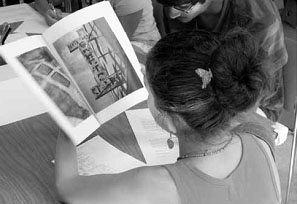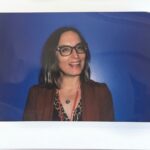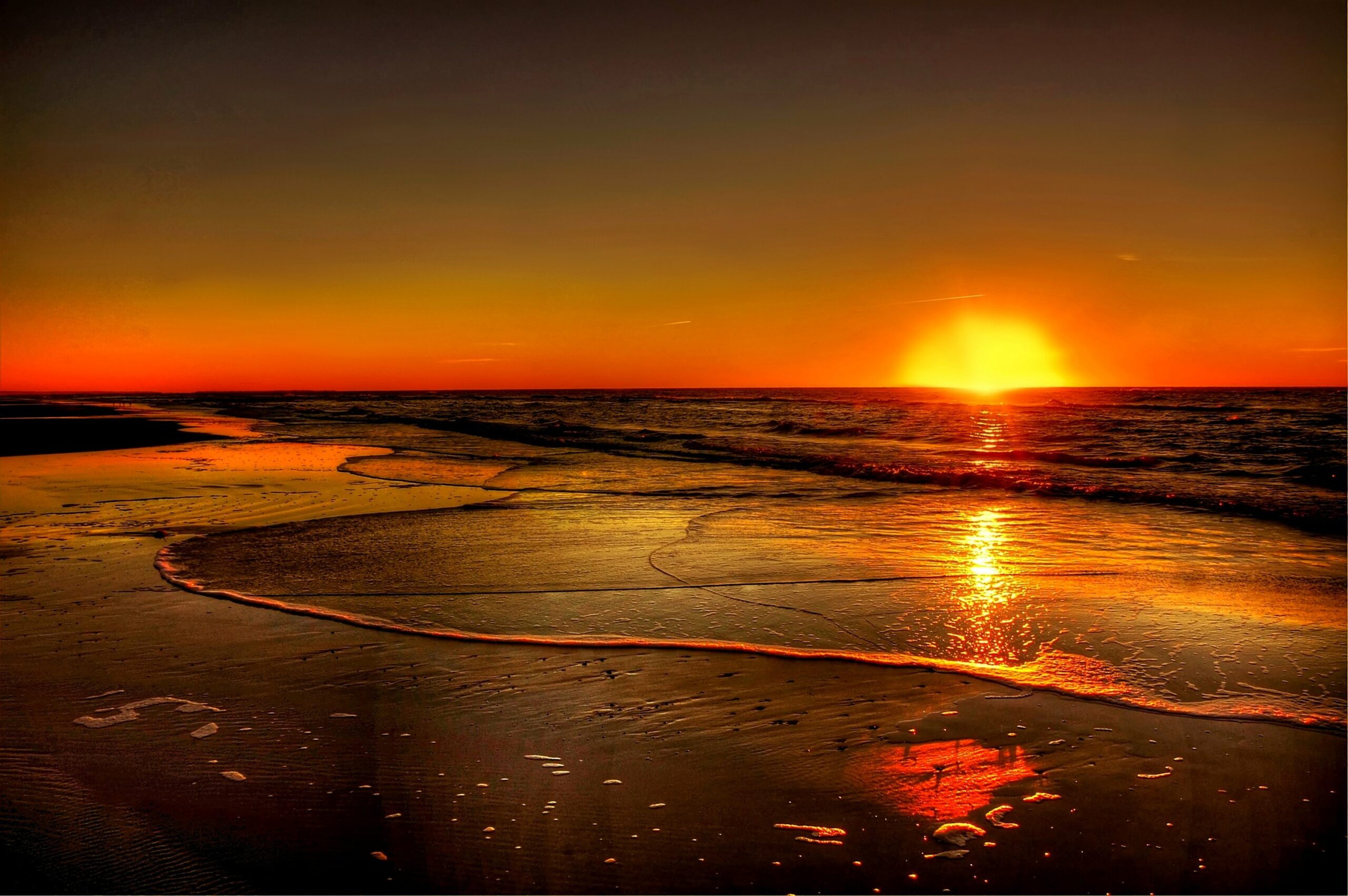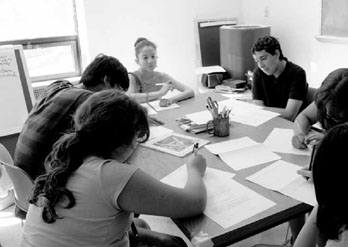T&W writers’ in-class writing prompts and exercises inspired and generated the adapted poem found in A Poem as Big as New York City. From this imaginative, diverse, massive, and multi-faceted material, an adapted work emerged. Here’s a peek at one of the lessons that served as the raw clay to shape young writers’ minds. All lessons were taught in New York City classrooms, but could be adapted to suit your own community and place.
Capturing the spirit of a place starts with finding the stories of the people who live there. The unique histories that individuals bring to the town or city in which they live, and the various ways they experience life in that place, are the things that help define a community.
Here are two of the exercises Teachers & Writers used in their New York City workshops to inspire the writings of kids and teens for A Poem as Big as New York City. Both are adapted from exercises in Sing the Sun Up: Creative Writing Ideas from African American Literature (Teachers & Writers, 1998). The first, from an exercise by Renée-Noelle Felice, is geared toward elementary and middle school kids; the second, from an exercise by Elizabeth Raby, is more appropriate for writers of high school age.
I Always Like Summer Best: Writing Poems About Your Hometown
Read the following poem by Nikki Giovanni with your students:
Knoxville, Tennessee
I always like summer
best
you can eat fresh corn
from daddy’s garden
and okra
and greens
and cabbage
and lots of barbecue
and buttermilk
and homemade ice-cream
at the church picnic
and listen to
gospel music
outside
at the church
homecoming
and go to the mountains with
your grandmother
and go barefooted
and be warm all the time
not only when you go to bed
and sleep.
After you’ve read the poem, tell the rumored story that Nikki Giovanni wrote this poem after moving to New York City in the winter when she was cold and missing home. Ask your students what details they can feel, taste, touch, smell, and see in the poem? Does Nikki Giovanni like Knoxville, Tennessee? How do you know? Talk about how the sensory details that she chooses show us, but don’t tell us, how she feels about her home.
Next, ask your students to think about where they live. Ask them to think about their favorite season there. What do they do during that season? What do they eat? What are the smells like? Ask them to title their poem the name of their town or community (you can also ask them to write about their favorite place within or near that community – like Grandma’s House or Metropolitan Swimming Pool or McCarren Park), then write a list poem that steals Nikki Giovanni’s first two lines, “I always like _________ [insert season] / best.” What details would go in the list? Remind the students to use as many sensory details as possible.
I Am Me: Writing Poems about Identity
Read the poem “The Idea of Ancestry” by Etheridge Knight [see below] aloud, and give out copies so the students in the workshop can read along with you.
Ask the teen writers in your workshop to think about the poem using the following questions as prompts:
- How is the narrator of the poem like his ancestors?
- Where is the narrator’s family from?
- What details (imagined or otherwise) are given to draw connections between the narrator’s family members and himself?
Next, ask the students to think about their own family identities: How might they draw connections between themselves and their own ancestors, even the ones they’ve never met? If it’s feasible, ask students to bring in photographs of their ancestors or family members, so they can study them and write about them. To get them started, ask them to answer the following questions, responding with as much specificity as possible:
- When did your family come to the US? Under what conditions? In what way (via boat, train, covered wagon)?
- Why did they immigrate here? (If you don’t know, ask your parents or grandparents or make an educated guess based on current events at that time.)
- Where is your family from? What is their national heritage? Their religious heritage? Their cultural heritage? What are some of the rituals, customs, foods, or cultural details related to these heritages? Does your family still practice any of these? If so, which ones? Give details.
- Are there any funny or sad or interesting anecdotes your family members tell about the family and/or your ancestors? What are they? (These can be truthful or legendary.)
- Why did your family choose the city, state, region you live in? Do you have family members who chose to live elsewhere? Why? How is your branch of the family different from other branches of the family? In other words, how does your region affect your family’s personality?
- What kind of work did your relatives do when they were younger? What do they do now? How has their work or trade affected your current family or your interests?
Once the students have answered some of the above questions, ask them to choose a particular aspect of their family history and write a poem about it, using details from their answers. Tell them to make sure to be as specific as possible!
For more information on teaching with these two poems and others, please check out T&W’s book Sing the Sun Up: Creative Writing Ideas from African American Literature. Lorenzo Thomas, editor. (New York: Teachers & Writers Collaborative, 1998).
The Idea of Ancestry
by Etheridge Knight1
Taped to the wall of my cell are 47 pictures: 47 black
faces: my father, mother, grandmothers (1 dead), grand-
fathers (both dead), brothers, sisters, uncles, aunts,
cousins (1st and 2nd), nieces, and nephews. They stare
across the space at me sprawling on my bunk. I know
their dark eyes, they know mine. I know their style,
they know mine. I am all of them, they are all of me;
they are farmers, I am a thief, I am me, they are thee.I have at one time or another been in love with my mother,
1 grandmother, 2 sisters, 2 aunts (1 went to the asylum),
and 5 cousins. I am now in love with a 7-yr-old niece
(she sends me letters in large block print, and
her picture is the only one that smiles at me).I have the same name as 1 grandfather, 3 cousins, 3 nephews,
and 1 uncle. The uncle disappeared when he was 15, just took
off and caught a freight (they say). He’s discussed each year
when the family has a reunion, he causes uneasiness in
the clan, he is an empty space. My father’s mother, who is 93
and who keeps the Family Bible with everybody’s birth dates
(and death dates) in it, always mentions him. There is no
place in her Bible for “whereabouts unknown.”2
Each fall the graves of my grandfathers call me, the brown
hills and red gullies of mississippi send out their electric
messages, galvanizing my genes. Last yr / like a salmon quitting
the cold ocean-leaping and bucking up his birth stream / I
hitchhiked my way from LA with 16 caps in my pocket and a
monkey on my back. And I almost kicked it with the kinfolks.
I walked barefooted in my grandmother’s backyard / I smelled the
old
land and the woods / I sipped cornwhiskey from fruit jars with the
men /
I flirted with the women / I had a ball till the caps ran out
and my habit came down. That night I looked at my grandmother
and split/my guts were screaming for junk/but I was almost
contented/I had almost caught up with me.
(The next day in Memphis I cracked a croaker’s crib for a fix.)This yr there is a gray stone wall damming my stream, and when
the falling leaves stir my genes, I pace my cell or flop on my bunk
and stare at 47 black faces across the space. I am all of them,
they are all of me, I am me, they are thee, and I have no children
to float in the space between.
Sarah Dohrmann is a Brooklyn-based writer of literary nonfiction whose work has appeared in Harper’s Magazine, Tin House Magazine, The Iowa Review, and New York, among others. She began teaching in the schools with T&W in 2001 and currently teaches at New York University; she also independently leads a personal nonfiction writing workshop called Diving Into the Wreck. After earning her MSW in June 2023, Sarah serves as a clinical social worker in the Domestic Violence Aftercare Program at University Settlement in New York City's Lower East Side.




